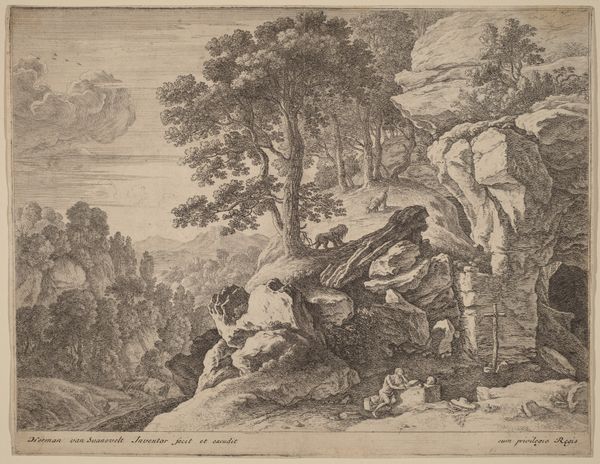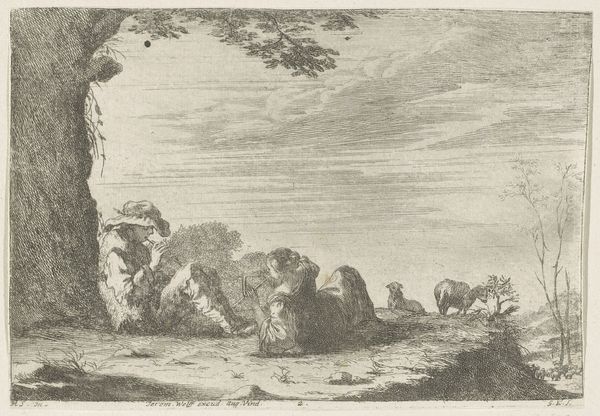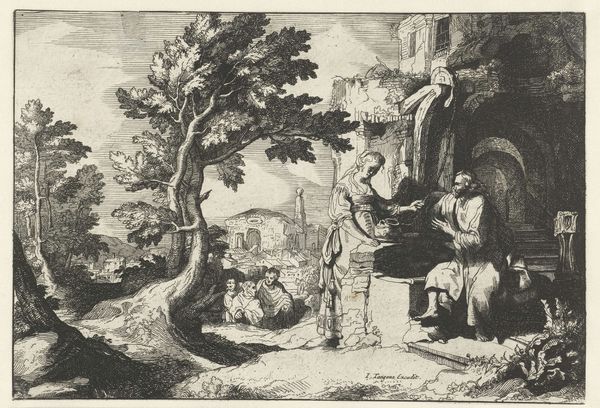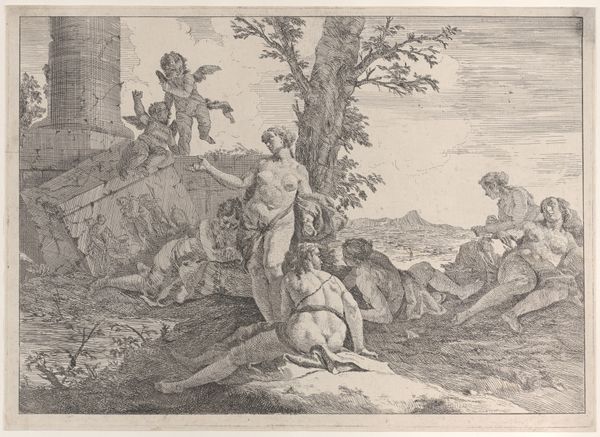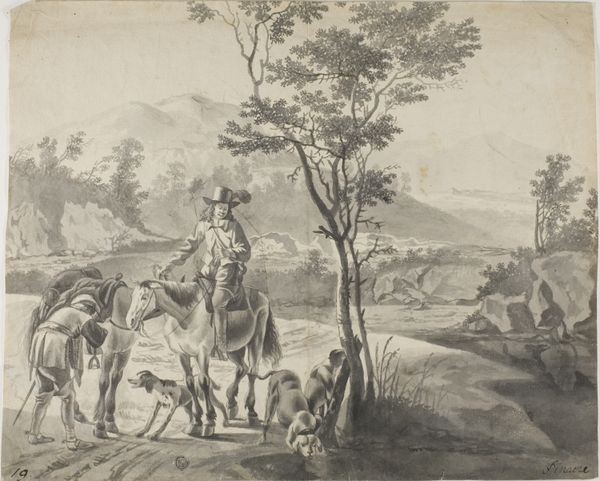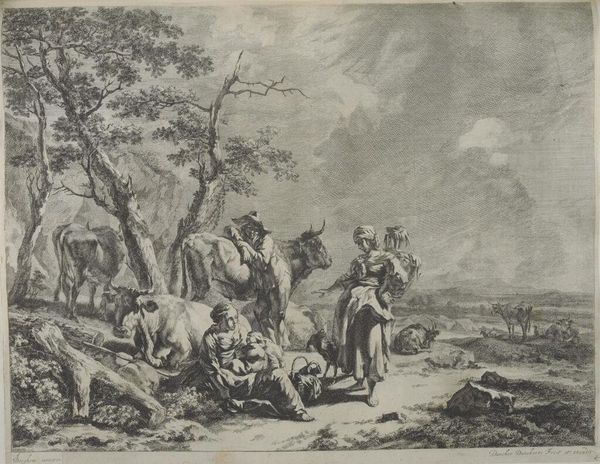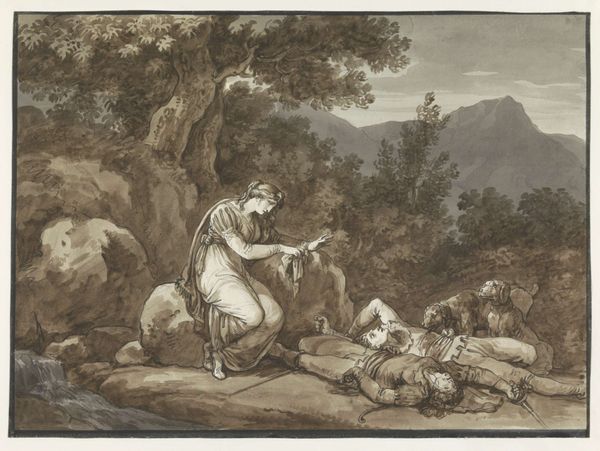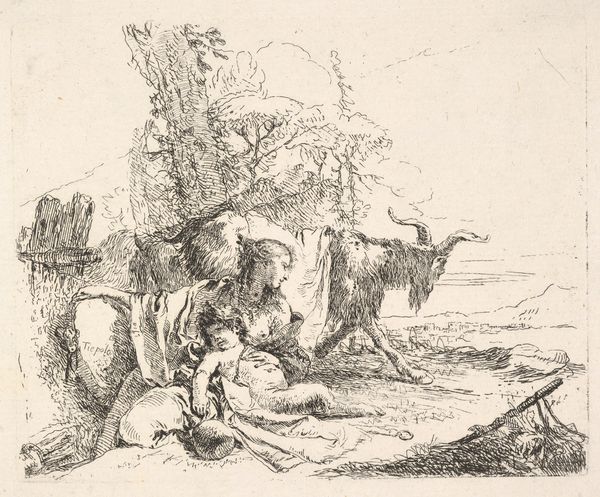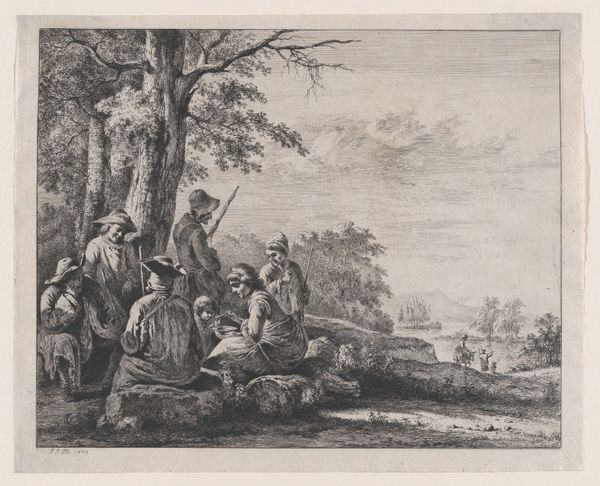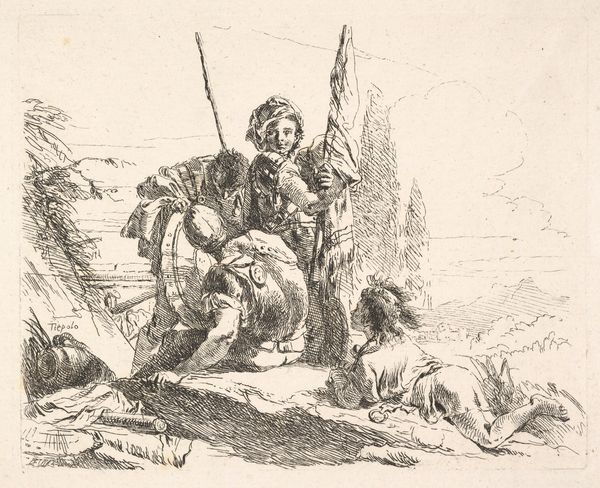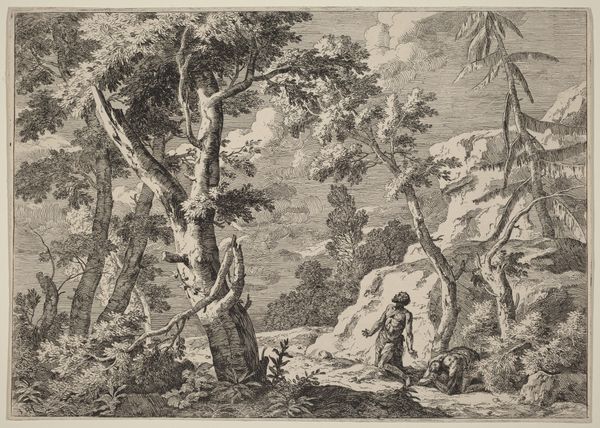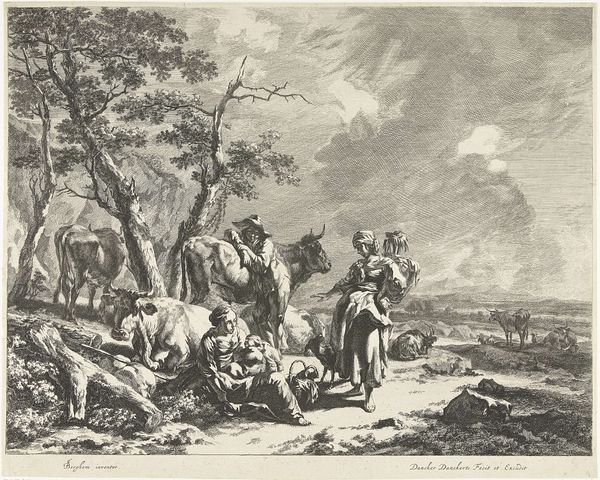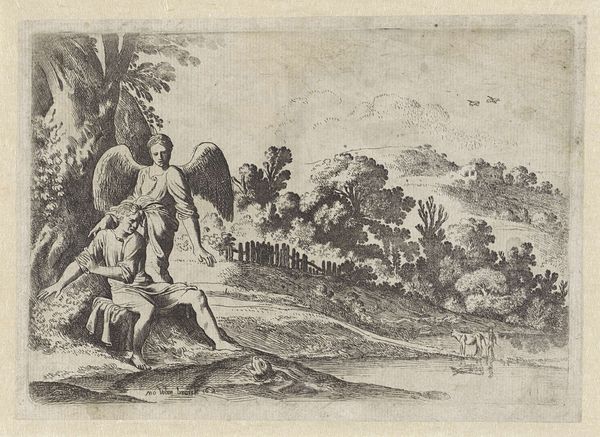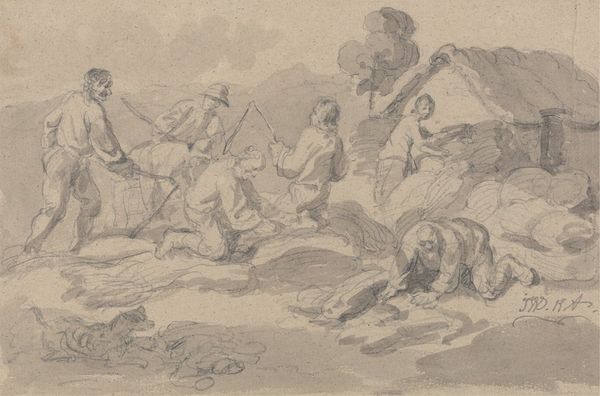
tempera, watercolor
#
tempera
#
landscape
#
watercolor
#
romanticism
#
watercolor
Copyright: Public Domain: Artvee
Editor: This is "The Statue" by Hubert Robert. It's done with tempera and watercolor in the Romantic style. I'm immediately drawn to the contrasting elements – the stoic statue, the broken architecture, the figures in distress. It has this palpable feeling of decay and melancholy, and a slightly theatrical composition. What do you see in this piece from a formalist perspective? Curator: Indeed, the formal elements orchestrate that emotional response. Notice how Robert uses a predominantly muted palette of browns, grays, and soft blues, contributing to the overall somber tone. Consider the diagonal line established by the leaning tree, leading the eye toward the statue, then broken archway, and finally dissolving in a dynamic open space above. Note how that statue's contrapposto suggests a self-contained stability amidst surrounding disintegration. What about the textures created by the tempera and watercolor combination, rough in some areas, smooth in others? Editor: Yes, I see what you mean. The rough texture gives the ruins a certain tangibility, as if we could reach out and feel their age. And that contrast with the statue gives it almost an unearthly perfection...So the contrasts in texture and color really create these different symbolic spaces. But where is the eye drawn first? Curator: Initially, the eye is caught by the lightest area – the open sky, but Robert skillfully uses compositional techniques to pull us downward to that group of figures at the work's centre and subsequently the other elements. We may speak about those figures being *on* those architectural components; but the artist's choices compel us to understand how the figures are truly *integrated* in ways material, symbolic, spatial and emotional, across the planes and pictorial systems present in the work. That complex relationship is perhaps most critical here. Editor: That's a very interesting point. Seeing how each component is meticulously constructed gives new insights into the emotion of the work. Curator: Precisely. Analyzing the formal aspects allows a deeper understanding of how artworks operate independently from what one knows about an artist. This yields objective criteria for understanding the overall success, purpose and impression made by any artwork.
Comments
No comments
Be the first to comment and join the conversation on the ultimate creative platform.
